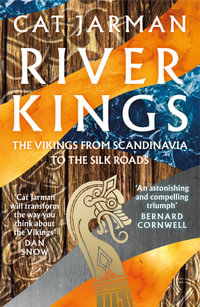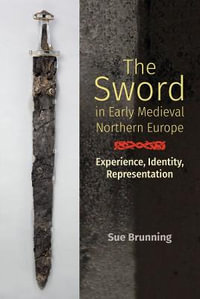Swords have been objects of fascination for millennia. They are prominent in the myths and histories of numerous peoples and remain pivotal in modern popular culture, inspiring everything from feature films to graphic novels. Their allure transcends the morbid appeal inherently associated with instruments of death: a powerful symbolic aspect has surrounded these weapons throughout time, across the world. For Anglo-Saxon England, modern researchers have tended to link the sword's symbolic relevance to the fact that it was an expensive item, accessible mainly to high-status individuals - despite myriad evidence that contemporary perceptions were more complex. Understanding the significance of swords in Anglo-Saxon society has become more pertinent since the discovery of the Staffordshire Hoard (2009), an unprecedented assemblage of metalwork that is dominated by sword-fittings. This study, the first to be dedicated to Anglo-Saxon swords in over half a century, aims to unlock this understanding. Looking beyond modern value judgements, it contextualises Anglo-Saxon swords within their own milieu by focusing on contemporary perceptions, exploring how those who owned, used and encountered these artefacts actually thought about them. The investigation has two strands. The first explores the 'presentation' of swords in early medieval art, archaeology and texts. This multidisciplinary approach is essential to gaining the broadest picture possible. The second strand focuses on the attitude of warriors towards swords. Understanding this relationship is fundamental, since swords were designed specifically for warfare and did not double as tools or hunting weapons. The study aims at a nuanced understanding of swords via its chronological and regional scope. Chronologically, it covers the entire Anglo-Saxon period from the fifth to the eleventh centuries. During this time, society experienced dynamic changes which are likely to have influenced perceptions of swords. It also incorporates a regional comparison with Scandinavia. Scandinavian peoples, most famously the 'Vikings', were a key influence upon Anglo-Saxon England, and in turn were influenced by it, stimulating developments in art, culture, language - and perceptions of swords. Considering these two regions in parallel yields valuable insights into what was distinctively 'Anglo-Saxon' (or not) about attitudes towards swords.
Industry Reviews
A small but perfectly formed book. * SAXON *
Brunning's careful interdisciplinary study of swords in the early medieval North will interest scholars from a range of fields, including literature, history, art history, archaeology, material culture, military studies, and the anthropology of violence. Scholars whose work intersects with new materialisms will also find much to admire in Brunning's balanced investigation of the complex interactions and likenesses between swords and human beings. By combining good judgment with ample learning in a variety of disciplines, Brunning has produced an important contribution to knowledge that is as challenging as it is rigorous.? * The Medieval Review *
This book represents a triumph among multi-disciplinary approaches to material culture. . . . The serious scholarship and playful inventiveness of this volume are the key characteristics that will ensure the longevity of its contribution. * Speculum *








